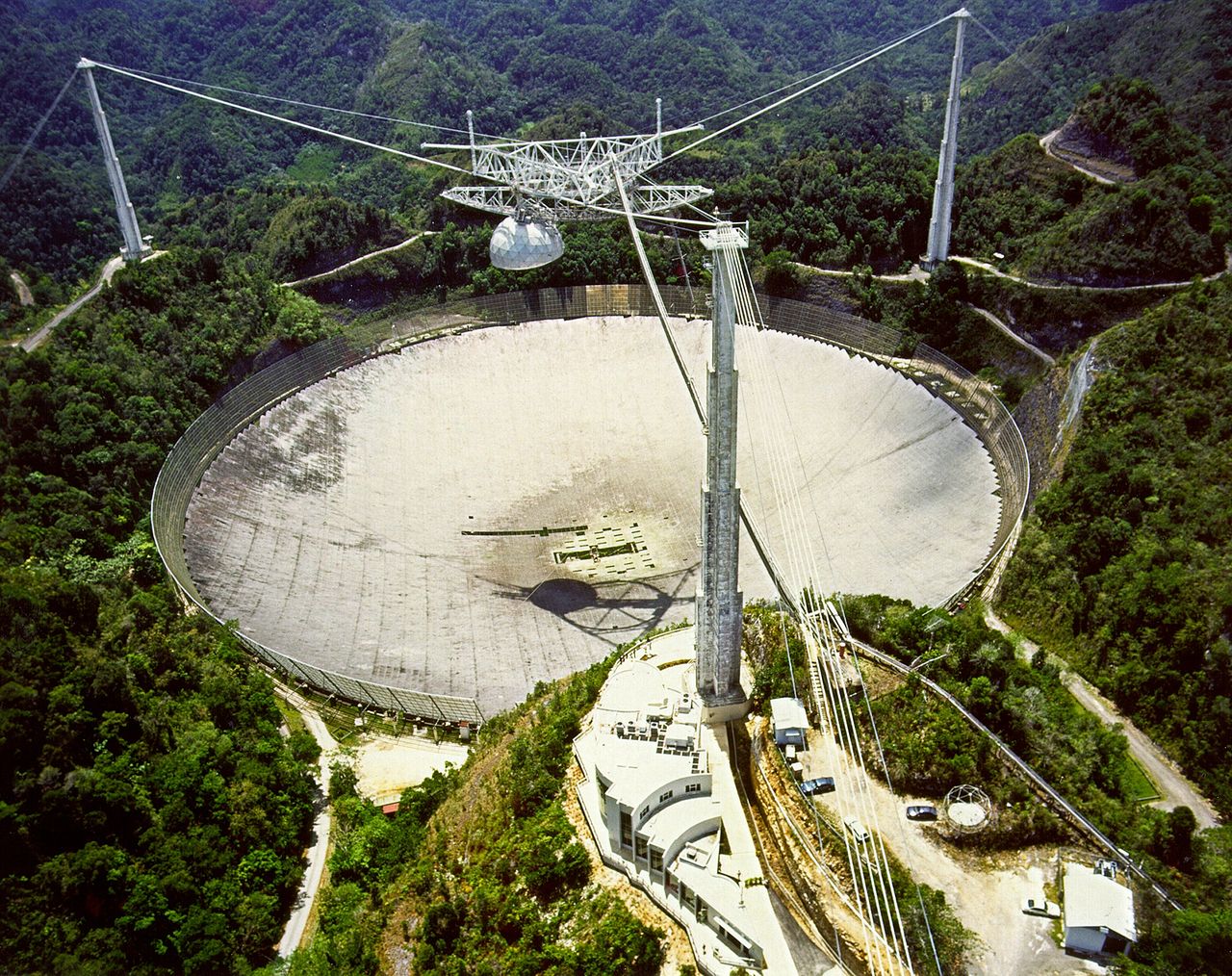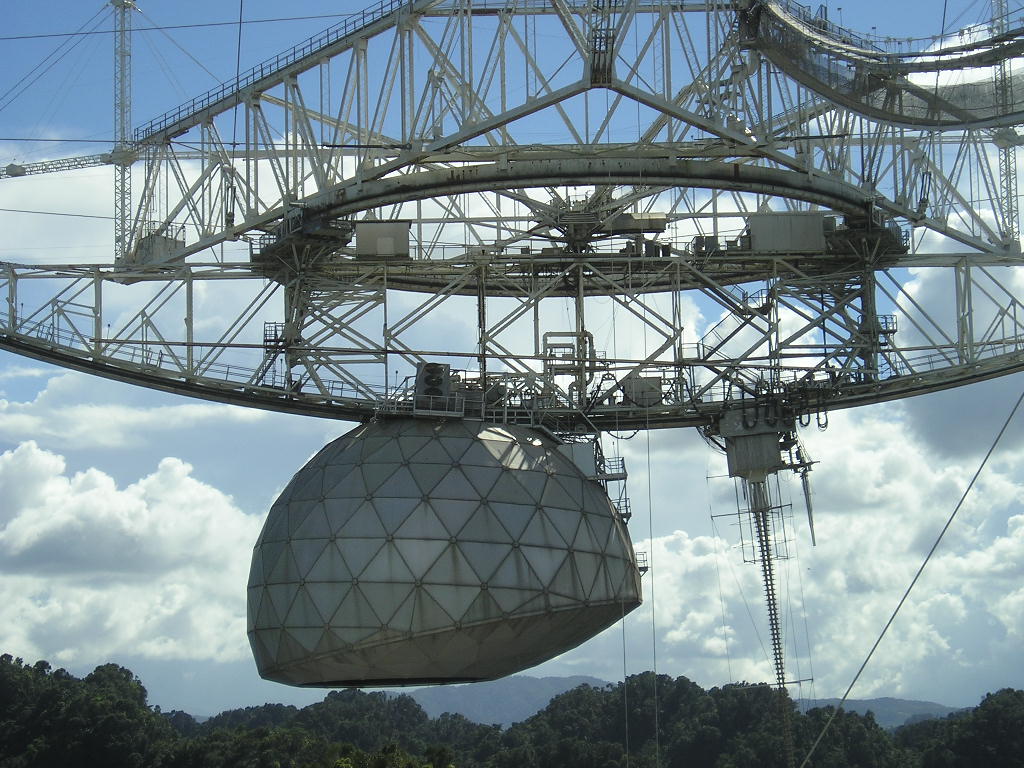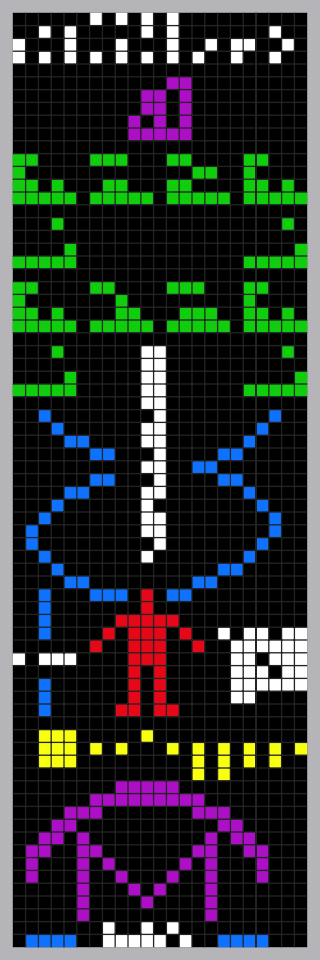Facts About The Famous Arecibo Observatory
Studying Space's Radio Signals
The Arecibo Observatory, located on the island of Puerto Rico, is 305-meter diameter radio telescope that was the world’s largest from 1963 until to 2016 when the Chinese Five hundred meter Aperture Spherical Telescope (FAST) was completed. The observatory is used for radio astronomy (listening for radio signals), radar astronomy (imaging inner Solar System asteroids etc) and atmospheric science.

Fast Fun Facts About The Arecibo Observatory
- Built in the early 1960’s, the 305 m (1,000 ft) spherical reflecting dish (unlike the parabolic FAST reflector) was built in a natural bowl-shaped depression and the dishes surface lined with 38,778 perforated aluminium panels.
- The signal receiver is suspected by cables, 150 meters above the dish and has a bow-shaped track which allows the telescope to point and observe any region of the sky in a 40-degree wide range about its zenith.
- The Arecibo Observatory is not just one of the world’s largest receiver, it is also a radar transmitter which can image objects such as near-Earth objects.
- Puerto Rico is located near 18 degrees north of the equator and because of this, the observatories field of view allows it to observe the planets out to Saturn for half of their orbit. Beyond Saturn and the radar signals take too long to return for the observatory to track the objects (such as Uranus and Neptune)!
- The Arecibo Observatory has also been involved with the Search for Extra-Terrestrial Intelligence (SETI) project by scanning the Milky Way for any signs of ‘non-natural’ signals that may be coming from intelligent civilizations somewhere else in our galaxy.
- The Arecibo Observatory is quite famous, featuring in many books, programs and movies such as Carl Sagan’s Cosmos series, the James Bond movie - GoldenEye, an X-Files episode and most famously the movie Contact where the main character uses the observatory as part of their SETI project that discovered an Extraterrestrial signal!
Major scientific discoveries of note that the Arecibo Observatory has been involved with;
-
- The rotation period of Planet Mercury which was thought to be 88 days (tidally locked with the Sun) was discovered to be only 59 days.
- Assessed in the discovery of neutron stars.
- In 1974, the first binary pulsars were discovered resulting in a Nobel Prize in Physics being awarded to the scientist.
- A message known as the ‘Arecibo Message’ was sent to the nearby star cluster ‘Messier 13’, in an attempt to make contact with any intelligent beings that may also be scanning the heavens. The message, even at the speed of light, will take 25,000 years to reach its target.
- Beginning in 1989 the Arecibo Observatory began using its radar transmission technology to directly image small inner solar system asteroids.
- The first exoplanets that were discovered when scientists were observing three pulsar stars.
One day the Arecibo Observatory may receive the first message from other intelligent life - otherwise known as Aliens!!



Arecibo Observatory
Close Up
Galactic Transmissions


